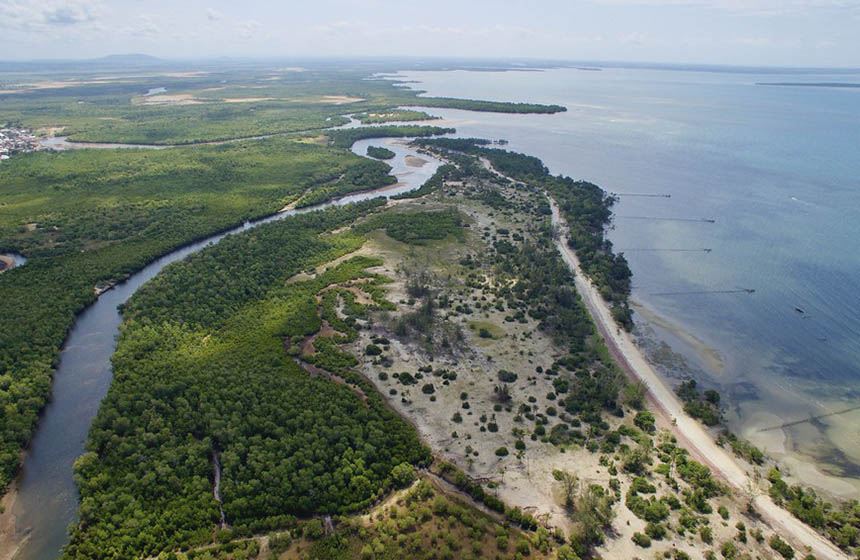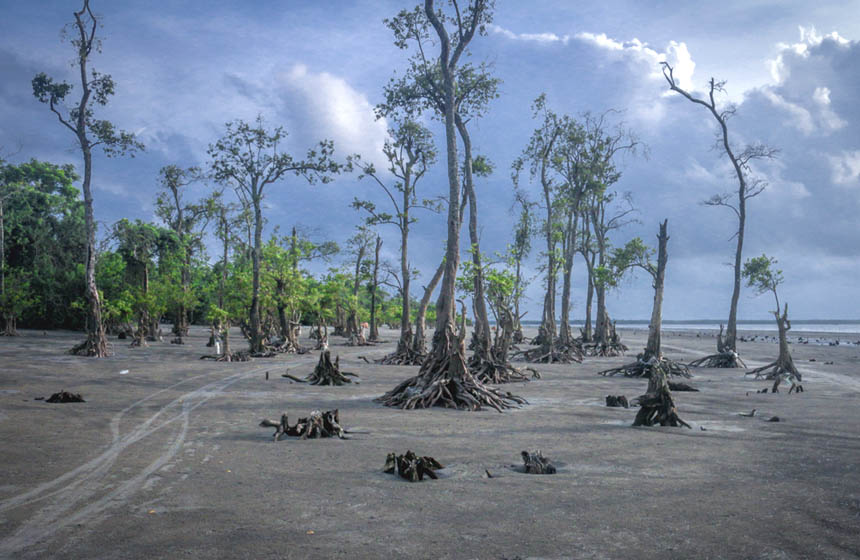Community-based mangrove restoration and carbon credit project
Mangrove restoration in the Gazi Bay provided critical shoreline protection and restored habitats for wildlife with additional revenues from carbon credits invested in further conservation efforts and community needs.
Nature-based Intervention:
The Mikoko Pamoja Community Organization (MPCO) is providing incentives for the restoration and more sustainable management of the local mangrove ecosystem through avoided deforestation and the replanting of degraded mangrove areas. The work of MPCO has generated income from carbon credits which have been used to pay for staff wages and various conservation activities, with any surplus further reinvested into the community’s needs. According to the UN, the total economic value of the mangrove forest through fisheries, timber, eco-tourism, research, education, aquaculture, shoreline protection, carbon sequestration, biodiversity, as well as its mere existence value is estimated at USD$ 1,092 per hectare per year.
Overview of context and outcomes:
The Gazi Bay, located on the southern coast of Kenya, has seen significant depletion and degradation of its mangrove ecosystem mainly due to a high demand for building materials and fuelwood. This overexploitation has led to the destabilization of the surrounding ecosystem evidenced by dwindling fish stocks and the destruction of habitats for coastal species. Mangroves provide an important biological barrier for the coastline and their disappearance from the Gazi Bay leaves adjacent communities vulnerable to coastal erosion.
Case effectiveness on
Climate change
It is estimated that total emission reductions expected through avoided deforestation and annual replanting is 50,000 tons CO2 over the next 20 years.
Although not quantified or reported, the restoration of the mangrove ecosystem is likely to reduce community vulnerability to coastal erosion and sea-level rise. The sustainable management of mangrove forests is likely to boost fish stocks which could contribute to greater food security.
Ecosystem health
Ecological effect: PositiveThe restored mangrove forest has reportedly improved critical habitats for fish and other wildlife.
Socioeconomic outcomes
The sale of carbon credits generated income to fund conservation activities, including project staff. The community has reported investing surplus carbon credit income to support community needs. The project is credited by community members for contributing to improved education standards, reductions in water-borne illnesses, and improved mangrove productivity.
Governance
This project is governed by the Mikoko Pamoja Community Organization.
Finance
This project is financed by the direct sale of carbon credits generated from the mangrove forest restoration.
Monitoring and evaluation
The mangrove forest in the area hosts many visiting academics who conduct extensive research and monitoring on the project.
Trade-offs and limitations
No information yet available on tradeoffs.
Ecosystem type
- Mangroves
Climate change impacts addressed
- Coastal erosion
Instigators
- Other
- Local NGO or CBO (eg. indigenous)
- Research institutions
Societal challenges
- Biodiversity conservation
- Climate change mitigation
- Economic and Social development
- Health
Outcomes
- Food security: Not reported
- Water security: Not reported
- Health: Positive
- Local economics: Positive
- Livelihoods/goods/basic needs: Not reported
- Energy security: Not reported
- Disaster risk reduction: Not reported
- Rights/empowerment/equality: Not reported
- Conflict and security: Not reported
- No. developmental outcomes reported: 4
Resources
Read resource 1Read resource 2
Read resource 3
Read resource 4
Literature info
- Grey literature




